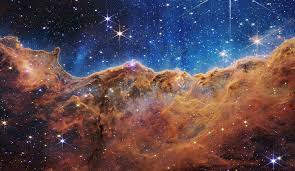A new chapter in space exploration has begun with the recent deployment of a revolutionary space telescope that promises to transform our understanding of the universe. This advanced instrument, designed to look further and deeper into the cosmos than ever before. Has already begun to reveal a wealth of previously unseen galaxies. Offering fresh insights into the origins and evolution of the universe.
The Breakthrough Technology Behind the Telescope
The new space telescope is equipped with cutting-edge technology that significantly outperforms its predecessors. Unlike earlier telescopes, which were limited by their ability to observe only certain wavelengths of light, this new instrument is capable of detecting a broad spectrum, from visible light to infrared. This capability allows it to peer through cosmic dust and gas that often obscures distant objects, revealing galaxies that were hidden from view.
The telescope’s primary mirror, larger and more sensitive than those of previous space observatories, captures faint light from the farthest reaches of space. Its onboard sensors and cameras then process this light, producing high-resolution images that provide unprecedented detail and clarity. This combination of advanced optics and imaging technology has opened a new window into the distant universe. Enabling astronomers to observe galaxies as they appeared billions of years ago.
Discovering the Unseen
Since its launch, the telescope has already made several groundbreaking discoveries. Among the most exciting are the detection of galaxies that formed in the early universe, some of which are over 13 billion years old. These ancient galaxies, never before seen. Offer clues about the conditions that existed shortly after the Big Bang and provide valuable information about how the first stars and galaxies formed.
In addition to uncovering these primordial galaxies, the telescope has revealed previously unknown structures within closer galaxies. Including intricate networks of star-forming regions and massive clouds of interstellar gas. These findings are helping astronomers piece together the complex processes that drive galaxy formation and evolution over time.
The Implications for Astronomy
The discovery of these unseen galaxies has profound implications for our understanding of the universe. By studying the light from these distant objects, scientists can trace the history of the cosmos. From its earliest moments to its present state. The data collected by the telescope will enable researchers to refine existing theories about the Big Bang, dark matter, and the expansion of the universe.
Moreover, the telescope’s ability to observe the universe in such fine detail opens up new possibilities for discovering exoplanets and understanding the environments in which they form. This could bring us closer to answering one of humanity’s most profound questions: are we alone in the universe?
The Future of Cosmic Exploration
As the telescope continues its mission. It is expected to make many more discoveries that will challenge and expand our current knowledge of the universe. Scientists are particularly excited about the possibility of finding the first galaxies that ever formed and gaining a deeper understanding of the dark matter that makes up much of the universe’s mass.
The success of this new space telescope marks a significant milestone in the ongoing quest to explore the cosmos. It serves as a reminder that, even in the vastness of space, there is still much to learn and discover.
Conclusion
The unveiling of unseen galaxies by this new space telescope is a testament to the power of human ingenuity and curiosity. As we continue to push the boundaries of technology and exploration. We move closer to unlocking the mysteries of the universe and understanding our place within it.
Join the 3K Club for exclusive online casino thrills and big wins!

